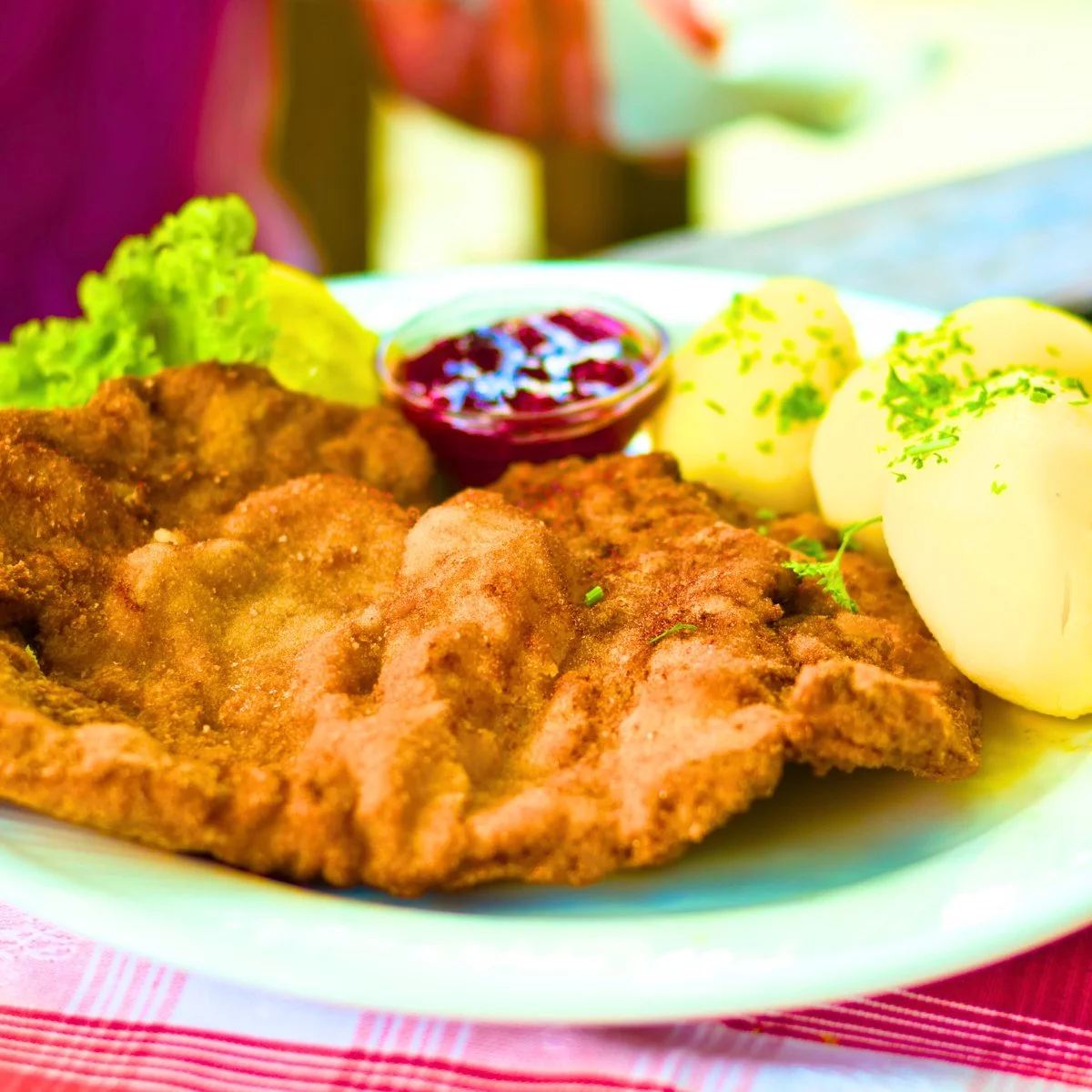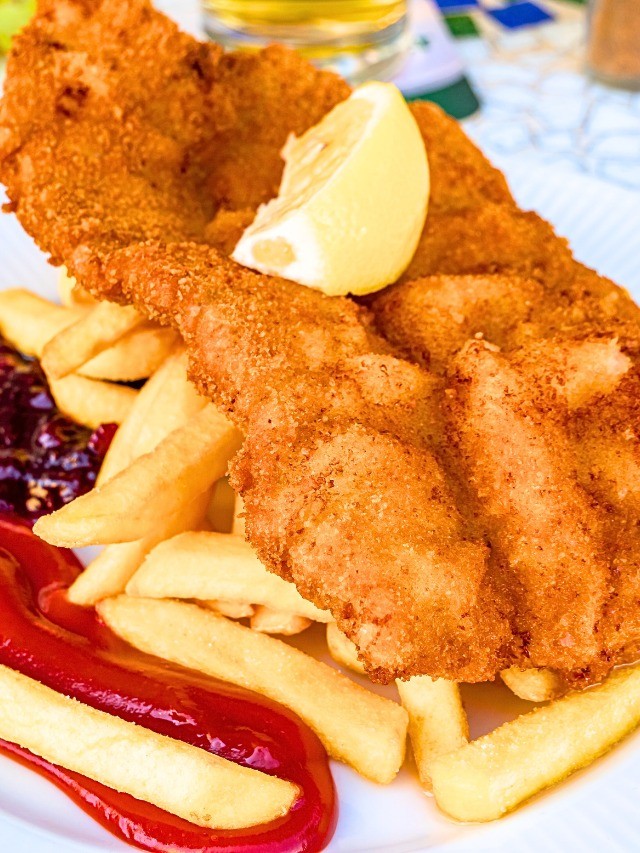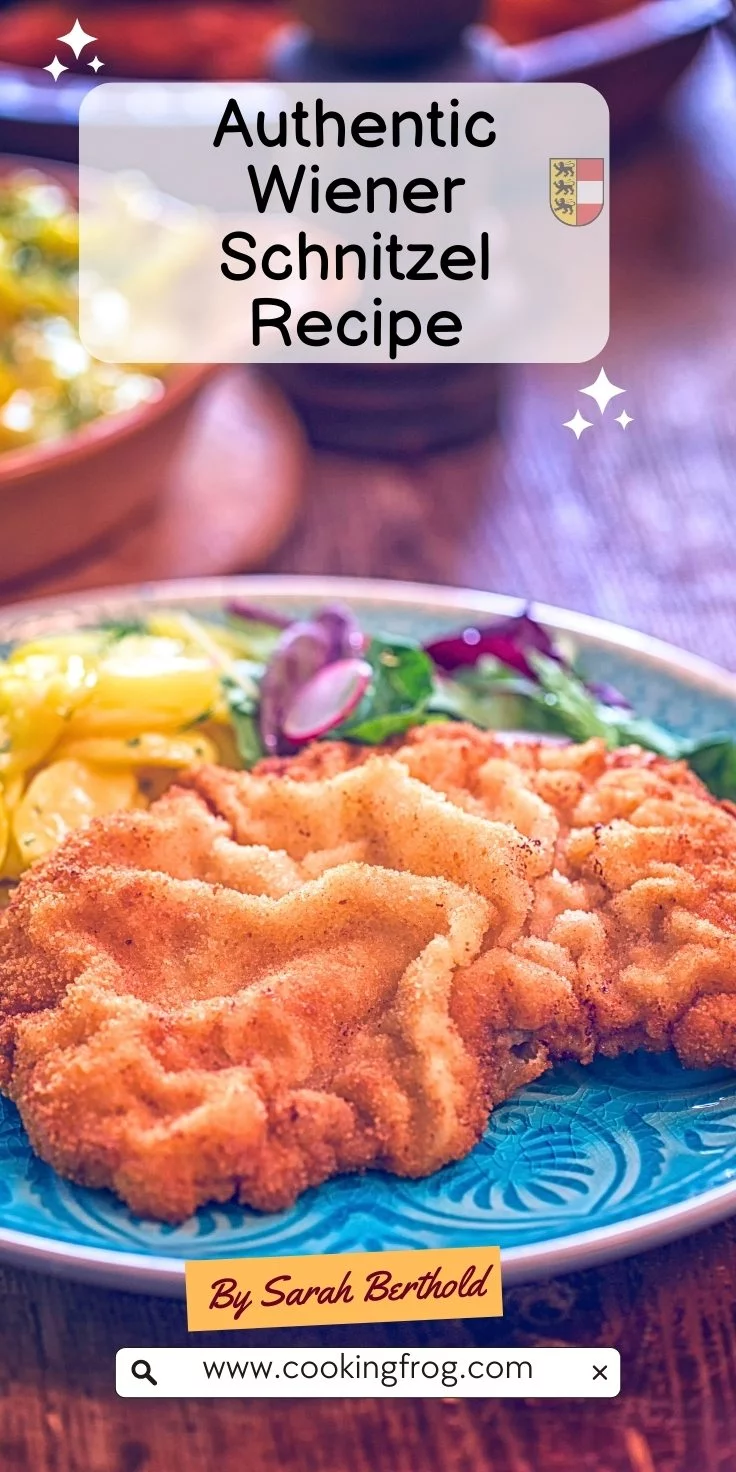Discover the secrets of making authentic Wiener Schnitzel with this recipe I recently acquired during a visit to Vienna’s renowned restaurant, Schnitzel Wirt. Known for its golden, crispy breaded cutlets, Wiener Schnitzel is a beloved Austrian dish that has captivated food lovers worldwide.
Whether you’re using veal, pork, or turkey, this guide will help you achieve the perfect schnitzel with tips straight from Vienna’s culinary experts. Follow these simple steps to bring a taste of Austrian tradition to your table.
Tailoring Wiener Schnitzel: Adjustments for Veal, Pork, and Turkey
1. Veal Schnitzel (Traditional)
- Preparation: Veal is the traditional choice for authentic Wiener Schnitzel. It’s naturally tender, so gentle pounding is sufficient to achieve the desired thinness.
- Cooking Time: Fry veal schnitzels for about 2-3 minutes on each side over medium-high heat. Veal cooks quickly and should remain tender and juicy.
2. Pork Schnitzel
- Preparation: Pork is a bit tougher than veal, so pound the cutlets to an even thinner consistency, about ⅛ inch thick, to ensure tenderness.
- Cooking Time: Pork requires a slightly longer cooking time than veal. Fry the pork schnitzels for about 3-4 minutes on each side. Ensure the pork is cooked through, as it must reach an internal temperature of 145°F (63°C) for safe consumption.
3. Turkey Schnitzel
- Preparation: Turkey breast can vary in thickness and tends to be lean. Pound the cutlets to about ⅛ inch thick, similar to pork, to promote even cooking and tenderness.
- Cooking Time: Turkey schnitzels should be cooked for about 3-4 minutes on each side. Like pork, ensure that turkey is thoroughly cooked, reaching an internal temperature of 165°F (74°C) to be safe for eating.
General Tips for All Meat Types:
- Oil Temperature: Regardless of the meat type, the oil should be hot enough that it bubbles and sizzles when a breadcrumb is added. This is typically around 350°F (177°C). Using a thermometer to check the oil temperature can help achieve consistent results.
- Post-Cooking: Allow the schnitzels to rest on a paper towel-lined plate to absorb excess grease, ensuring a crispier finish.
Each type of meat offers a unique flavor and texture, making Wiener Schnitzel a versatile dish suitable for various tastes and dietary preferences. Adjusting the thickness and cooking times accordingly will help you master this delightful recipe straight from Vienna’s Schnitzel Wirt.
Wiener Schnitzel Recipe
Ingredients:
- Veal Cutlets: 4 pieces, 5-6 ounces each (substitute with pork or turkey if preferred)
- Eggs: 2, large
- All-Purpose Flour: ¾ cup (for coating)
- Breadcrumbs: ¾ cup (preferably coarse-ground)
- Seasonings: Salt and pepper, to taste
- Cooking Fat: Clarified butter or plant oil, for frying
- Garnish: Lemon slices
Tools:
- Meat mallet
- Three shallow dishes
- Large frying pan
- Kitchen paper
- Spatula
Instructions:
Step 1: Prepare the Schnitzels
- Tenderize Cutlets: Place veal cutlets between two pieces of plastic wrap. Using a meat mallet, pound them to an even thickness of about ¼ inch. Remove any excess skin or fat.
- Season: Sprinkle both sides of each cutlet with salt and pepper.
- Dredging Stations: Arrange three shallow dishes on your counter. Fill the first with flour, the second with beaten eggs, and the third with breadcrumbs.
- Coat: Dredge each cutlet in flour, shaking off excess. Dip next into the egg, ensuring complete coverage. Finally, coat thoroughly in breadcrumbs. Press the breadcrumbs gently with the back of a fork to ensure they adhere and create a fluffy texture upon frying.
Step 2: Fry the Schnitzels
- Heat Fat: In a large frying pan, heat enough clarified butter or oil to allow the schnitzels to “swim” freely. The fat is ready when a few breadcrumbs dropped into the pan sizzle and bubble immediately.
- Fry: Carefully place the schnitzels in the hot fat. Cook for 2-4 minutes on each side, until golden brown and crispy. Use a spatula to flip the schnitzels—avoid piercing them to keep the coating intact.
Step 3: Serve
- Drain: Transfer the cooked schnitzels to a plate lined with kitchen paper to absorb excess oil. Gently pat the tops with additional paper.
- Garnish and Serve: Arrange schnitzels on plates and garnish with fresh lemon slices. Serve hot.
Enjoyed this Wiener Schnitzel recipe? Spread the love and pin the image below to your favorite Pinterest board for others to discover!
Serving Suggestions:
- Traditional Accompaniments: Enjoy your Wiener Schnitzel with a side of parsley potatoes, rice, potato salad, or a mixed green salad for a complete meal.
Cooking Tips:
- Oil Temperature: Maintaining the correct oil temperature is crucial. If the oil is too hot, the coating will burn; if it’s too cool, the schnitzels will absorb excess oil and become greasy.
- Meat Thickness: Uniform thickness ensures even cooking. Thinner schnitzels are traditional and cook more quickly, providing a delightful crunch.




